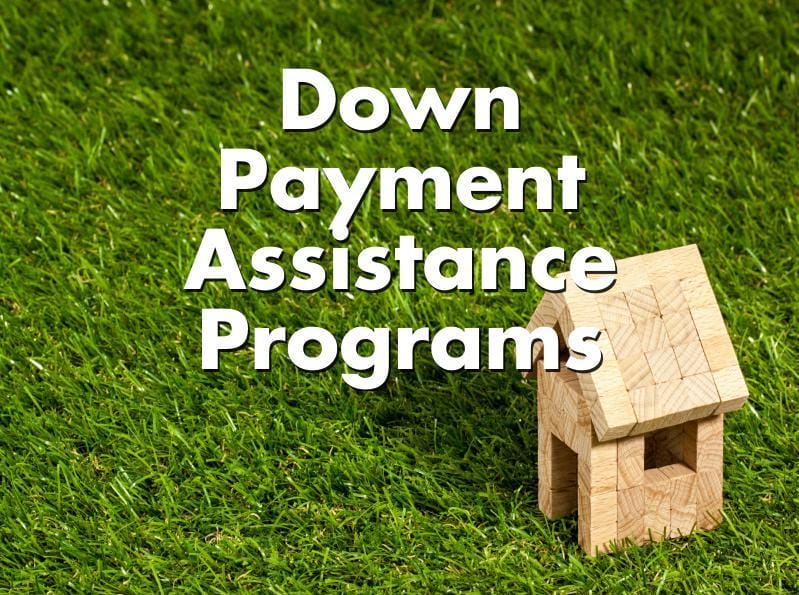One of the largest hurdles towards home ownership is the down payment. With tight budgets and high costs of living, it can be tough for hard-working people to save enough money to have a substantial down payment.
With no down payment, potential homeowners may be stuck with less-affordable loan terms. In some cases, they may not even be able to get the loan they need.
The state of California, however, has multiple programs that help potential homeowners achieve their goals. This assistance often comes through the California Housing Finance Agency or the Golden State Finance Authority. From entire mortgage loans to grants for down payments, these programs help make homeownership a reality for thousands of families across the state.
Understand the programs available to you and you’ll have a better chance at securing an affordable mortgage loan, with or without a down payment.
Down-Payment Assistance and Mortgage Programs in the State of California
Homebuyer Programs from the California Housing Finance Agency
The California Housing Finance Agency, or CalHFA, has been working with renters and buyers since 1975, offering financing with the goal of creating safe and affordable housing for California residents with low or moderate incomes. It’s a lender that provides low-interest loans that are assisted by the sale of tax-exempt bonds. With the sale of bonds, CalHFA is 100% self-supported, with revenues from mortgage loans, not taxpayer dollars.
First-Mortgage Loan Programs from CalHFA
The CalHFA offers a large variety of loan programs, starting with first-mortgage programs. This includes the CalHFA Conventional Loan Program, which is a first-mortgage loan insured by private mortgage insurance on the conventional market. This is loan that has a fixed rate throughout the entire 30-year period.
They also offer CalPLUS Conventional Loans, a first-mortgage program that has a slightly higher interest rate than the standard or conventional loans. The loan is fully amortized for the 30-year length, and combines with the CalHFA Zero Interest Program to assist with down payments or closing costs.
The CalHFA also offers loans that are insured by the government, including items in the FHA program. These are fixed-rate loans that are fully amortized for the entire 30-year period. There is also a CalPLUS FHA loan program, which has a slightly higher interest rate than the standard programs. Like the other CalPLUS offerings, it is combined with the Zero Interest Program for closing costs. There is also the Cal-EEM + Grant program, which is a program designed to encourage energy-efficient home improvements.
Down-Payment Assistance from CalHFA
The CalHFA also works to help individual reach a down payment for their mortgage loans. For many people, this is one of the largest hurdles to securing a loan, but CalHFA offers MyHome Assistance Programs, which provide a deferred payment up to 3.5% of the purchase price or the property’s appraised value.
They also offer a program called the Extra Credit Teach Home Purchase Program, or ECTP. This is for teachers and school employees throughout California’s K-12 public schools, helping with downpayment assistance for teachers and other staff seeking their first home.
The Mortgage Credit Certificate Tax Credit Program
Finally, the CalHFA offers assistance with a federal credit that is available to first-time homebuyers. This tax credit allows buyers to convert a portion of their income into a dollar-for-dollar tax credit on their individual U.S. tax returns. While this is a federal program, the CalHFA can help you take advantage of this opportunity.
Down Payment Opportunities from the Golden State Finance Authority
The Golden State Finance Authority was organized in 1993 with the goal of helping more Californians reach affordable home ownership. Currently, they have provided assistance to over 69,000 individuals and families, with more that $481 million in down-payment assistance. They have also helped with over 22,000 energy-efficiency upgrades.
One of the GSFA’s most popular programs is the Platinum Program. This was created to help low and moderate-income families purchase a home by providing assistance with down payments and closing costs. This assistance is offered in the form of a non-refundable grant. This program is credited with helping over 18,000 people, providing over $153 million in support.
The GSFA Platinum Program is non-repayable and can cover up to 5% of the loan amount. If you are taking out a loan totaling $150,000, this can mean up to $7,500 in grant. If the loan is $250,000, you could receive as much as $12,500. This can mean significant help for your home purchase.
Unlike many other programs, this is not limited to first-time homebuyers only, making it accessible to many more California residents. It requires a FICO score of 640 or higher and you must also have a debt-to-income ratio of 45% or lower. The program is available for various types of mortgage loans.
The grant is completely non-refundable. This means once the mortgage loan is made official, the grant is forgiven. It’s essentially a gift from the California taxpayers to you.
To qualify for the program, you must meet some specific guidelines. First, the property you intend to buy must be your primary residence; you can’t, for example, use the program to help purchase an investment property. However, you can purchase a one to four-unit property, depending on the type of mortgage, and there is no requirement for you to remain in the home for a certain period.
Manufactured and mobile homes may be permitted under certain circumstances. You cannot, however, use the program to purchase a vacation house or second home.
Your income must not exceed specific limits, which are different for each county in the state. You can use the Program Income Limits page on the GSFA website to see what the income limit is for your area.
If you meet all the above requirements, you can apply for the program through a participating lender. These lenders are approved by the GSFA to help homebuyers understand the process and achieve their goals. The program can be applied to conventional loans, as well as FHA, VA, and USDA 30-year mortgages.


